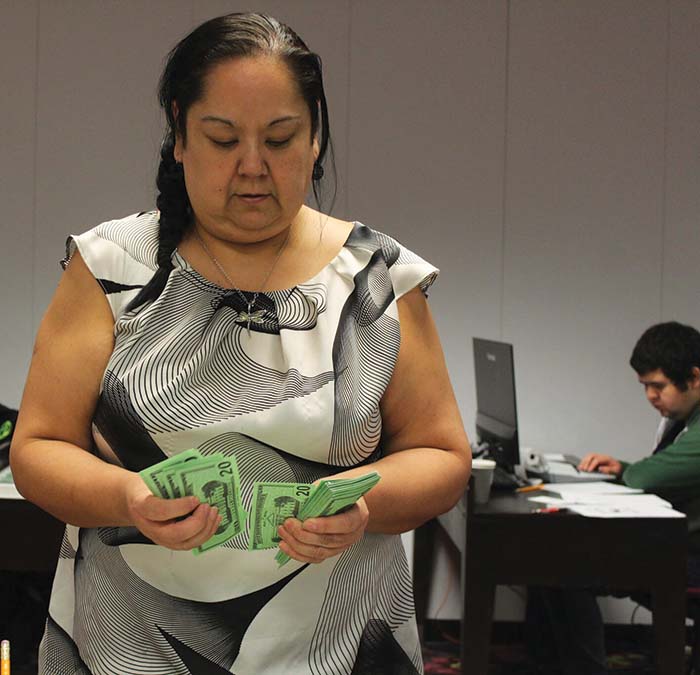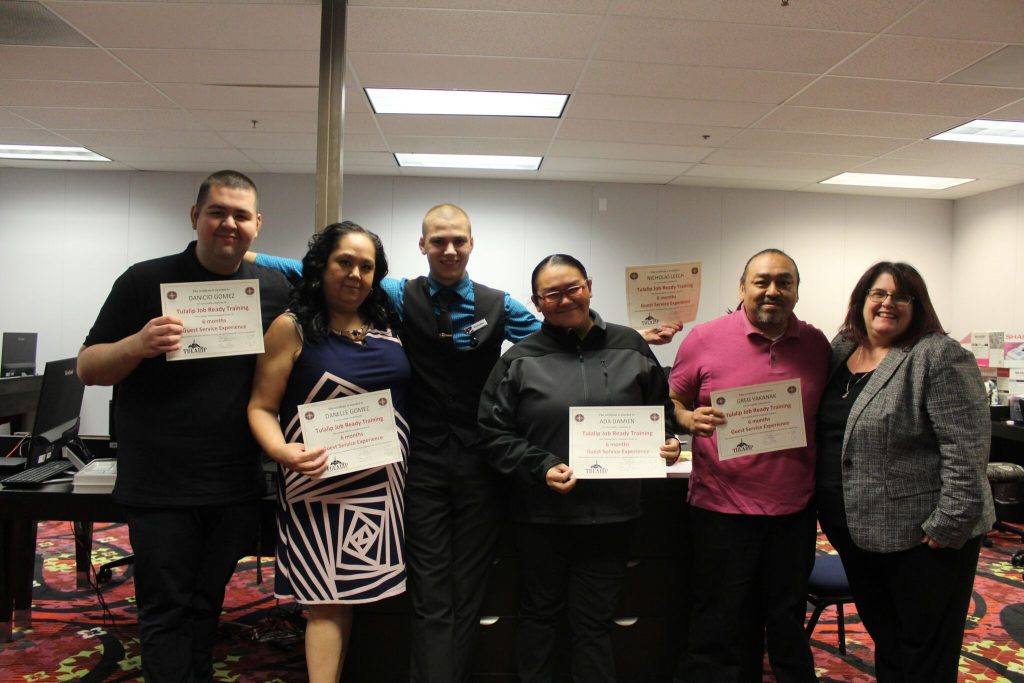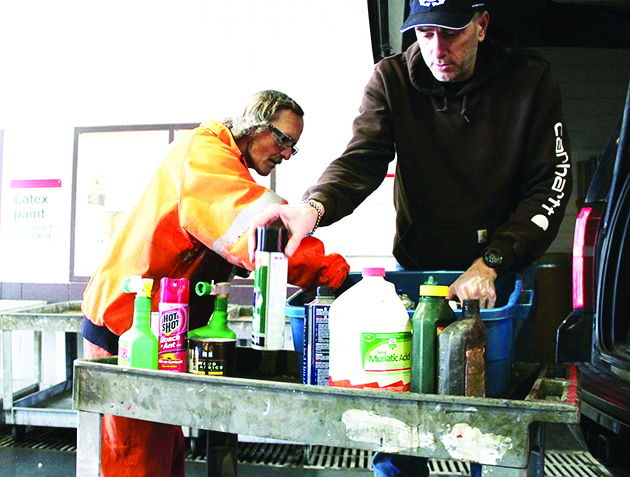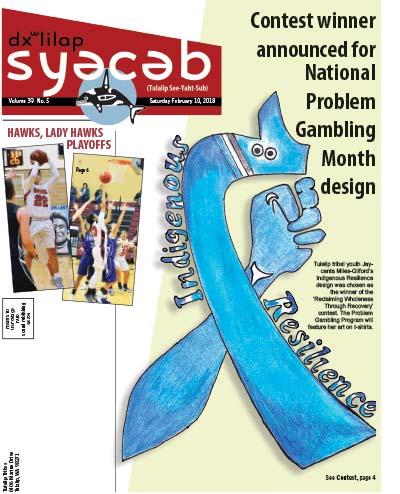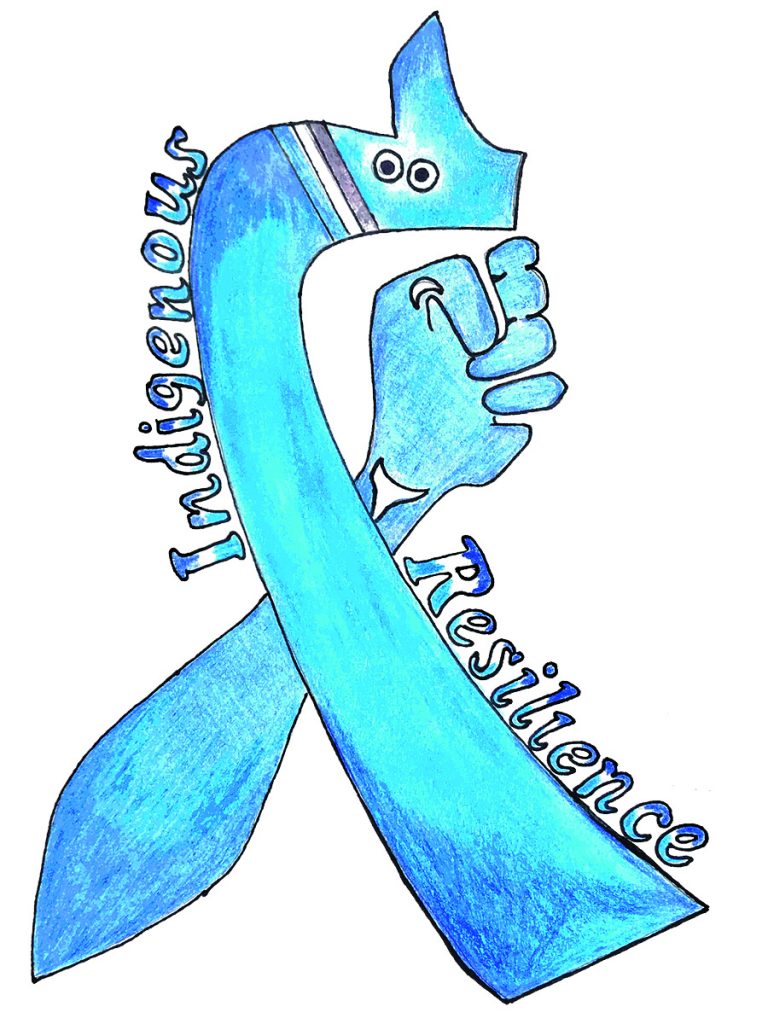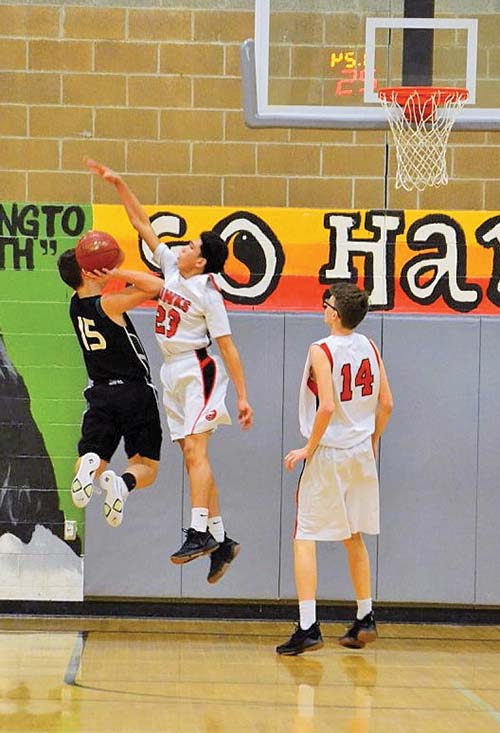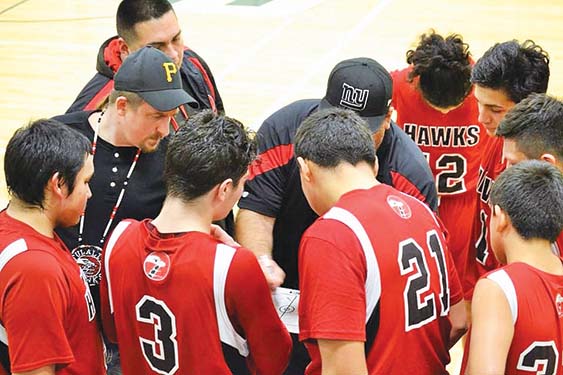By Micheal Rios, Tulalip News
The Tulalip Heritage Lady Hawks basketball team steamrolled their inner-league competition during the regular season, going a perfect 12-0 in those games. That momentum carried over in the first two rounds of the NW1B District Tournament when they crushed Cedar Park Christian 62-20 and Grace Academy 60-34.
Entering the NW1B Championship game versus the Mt. Vernon Christian Hurricanes, played at Lummi High School on February 7, the Tulalip girls had won an impressive four straight games by 25+ points. However, for the first time in a long while they’d be facing an opponent who had an equal amount of talent and athleticism.
Both teams played a well-matched 1st quarter that finished with a 7-7 tied ball game. The Hurricanes were double-teaming forward Deandra Grant early and often, which made it difficult to get her the ball in her usual spots. After taking a 17-11 lead in the 2nd quarter, Tulalip’s zone defense fell victim to hot outside shooting by the Hurricanes. With a little over three minutes left in the 3rd quarter the score was 20-19 Tulalip.
Senior guard Keryn Parks then did her best to take over the game. She was beating everyone down the court in transition and her teammates her throwing her half court passes she could gather and score off of. The strategy was working as the Lady Hawks ended the 3rd quarter on a 14-3, giving them a 34-22 lead.
In the 4th quarter, the Mt. Vernon Christian coaching staff made some crucial adjustments that changed the game completely. They started double-teaming the hot-handed Keryn even when she didn’t have the ball, basically forcing other Lady Hawk guards to handle the ball. They also implemented a full-court trap that caused the Lady Hawks to turn the ball over several times on errant passes. Add in Tulalip’s foul trouble and it was the perfect storm of doom and gloom that led to the Lady Hawk’s eventual collapse.
Tulalip’s once double digit lead in the 4th quarter gradually disappeared and with only thirty-five seconds remaining, the Hurricanes took their first lead of the game 41-40. The Lady Hawks were unable to regain the lead and lost 40-44, to take 2nd at the District Tournament.
Days later, the Lady Hawks returned to the court as their 2nd place showing at Districts gave them a Tri-District home game. Heritage hosted Clallam Bay at Francy J. Sheldon gymnasium on Tuesday, February 13.
The Tulalip girls jumped out to an early 6-0 lead before Clallam Bay fought back to tie the game at 11-11 going into the 2nd quarter. The offense was running their usual plays and getting the shots they wanted, but the ball just wouldn’t go through the hoop. In the 1st half the Lady Hawks shot an abysmal 8-38 from the floor.
Nearing the end of the 3rd quarter, the Lady Hawks were still struggling on the offensive end and saw their biggest deficit of the game, 32-44. Over the next five minutes of play Tulalip finally found their rhythm and knocked down shot after shot. They went on an impressive 17-3 run to take a 49-47 lead with only minutes remaining in the game. The long quiet home crown came alive and was cheering on their team.
But, the Lady Hawks tendency to pick up so many early fouls came back to haunt them in this game, similarly to what happened in their last game. Several Lady Hawks players found themselves in foul trouble early on and in the game’s closing minutes they were fouling out. Clallam Bay was knocking down their free-throws and in the end their 17 made free-throws proved a difference maker. Tulalip lost a heartbreaker, 55-63.
As a team the Lady Hawks shot 21-76 from the field, a 28% shooting percentage that is difficult for any team at this stage in the postseason to overcome. Keryn led her team in scoring with 23 points, while Deandra finished with 16 points and 23 rebounds.
Next up, the Lady Hawks play a loser-out game vs. Rainier Christian.




